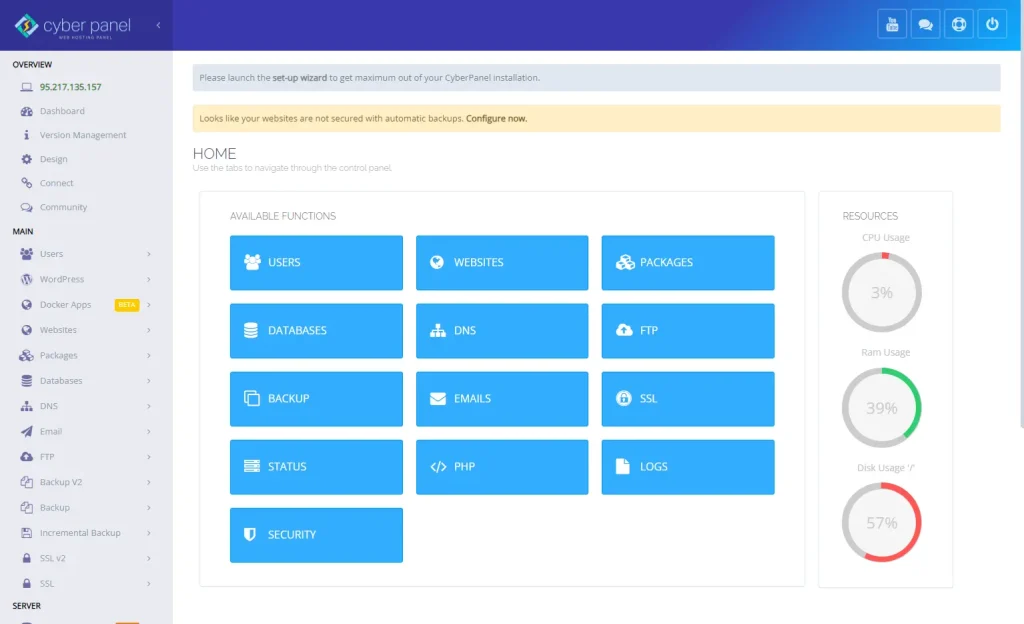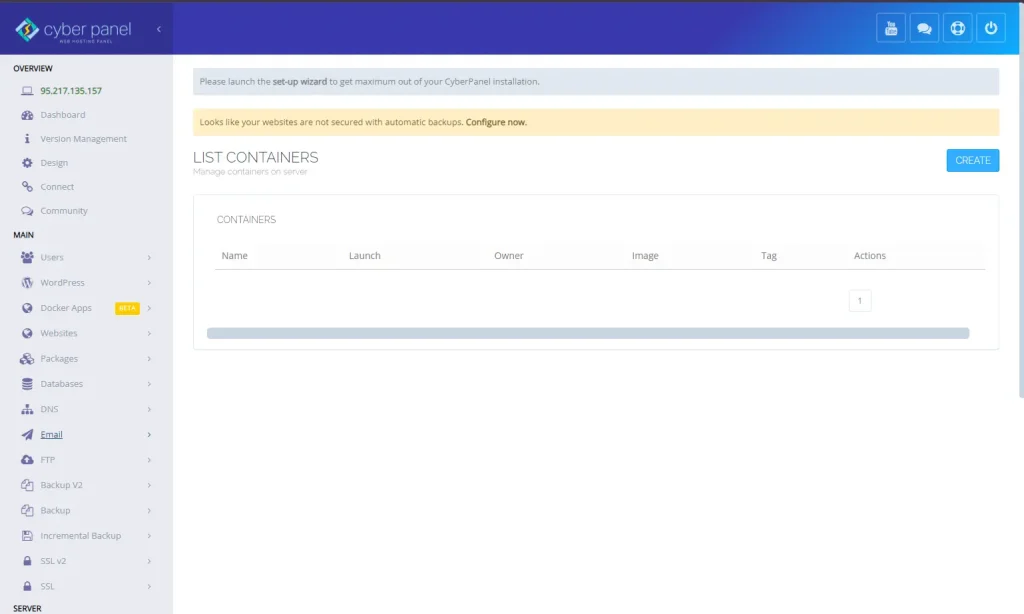In the fast-paced world of software development nowadays, container orchestration is a needed factor to handle the deployment and management of applications efficiently. The two most recent on-trend platforms for container orchestration are Docker Swarm and Kubernetes. Their differences in features and benefits create a variety of choices for users.
Thus, this article shall give further details into Docker Swarm vs Kubernetes, their differences, use cases, and which could be the better fit based on which specific need.
Introduction to Container Orchestration
Automated container orchestration, as such, refers to the activity of managing the deployment, scaling, networking, and availability of any applications running on containers. Containers have revolutionized the world of developers by providing lightweight, isolated environments through which they build, ship, and run their applications. However, manual management of such a big application in containers becomes impractical and hence impossible for mass scale. It is due to this reason that the automation of tools for orchestrating is available, thus giving the developers an easy way of coordinating large-scale containerized workloads.
The two leaders in that space are Docker Swarm and Kubernetes. Although they share the same basic function, they vary in functionality, scalability, complexity, and ease of use. Let’s break down their respective features in greater detail.
Docker Swarm: Overview and Features
Docker Swarm is a native clustering and orchestration tool by Docker. It allows the management of multiple Docker containers across different nodes, thereby offering an application that is highly available and scalable. Swarm converts a cluster of Docker engines into a single virtual Docker engine; hence, a distributed system of containers becomes easy to run.
Key Features of Docker Swarm
- Easy Setup: Many instances can be seen where people can see ease of setup. It is easy to set up Docker Swarm, which is also known for simplicity; therefore, it seems perfect for those developers who are already familiar with Docker as well.
- Native Docker Integration: Since Swarm is built directly into Docker, developers can use the same Docker commands and tools that are familiar to them.
- High Availability: Docker Swarm ensures services are always available because in the event of failure, workloads are spread across a set of nodes.
- Load Balancing: Swarm distributes incoming traffic among running containers for efficient and smooth load balancing.
- Simple Networking Model: Docker Swarm employs a simple networking model that allows easy connections of services across multiple containers.
Its simplicity is one of the strong selling points for Docker Swarm, but this is not likely to be the best suited for complex or large-scale production environments.
Get exclusive access to all things tech-savvy, and be the first to receive
the latest updates directly in your inbox.
Kubernetes: What is Kubernetes and its Features?
Kubernetes, also known as K8s, is an open-source orchestration system initially designed by Google but now maintained by the Cloud Native Computing Foundation or CNCF. The technology is designed to automate the deployment, scaling, and management of application containers across multiple hosts in a cluster form. Kubernetes has been able to grow into the de facto standard for container orchestration and provides wide capabilities for managing large, complex deployments.
Key Features of Kubernetes
- Scalability: Highly scalable-Kubernetes is built for large applications. You can add or remove containers easily with it via horizontal scaling.
- API: It provides a rich set of APIs that enable integrating it with other tools and platforms.
- Self-healing: Kubernetes automatically restarts the containers that failed, replaces, and kills the unresponsive containers based on specific health checks implemented by the user, and then reschedules them upon the death of the nodes.
- Automatic Rollbacks and Rollouts: Kubernetes makes it easy to update applications, and in case something goes wrong, it automatically reverts to previous versions.
- Load Balancing and Service Discovery: Kubernetes offers sophisticated load balancing and service discovery that would route traffic to the appropriate containers.
Although Kubernetes is more complex than Docker Swarm, its sophisticated features make it better suited for all enterprise-level and large applications.
Head-to-Head Comparison: Swarm vs Kubernetes
Docker Swarm and Kubernetes are two very powerful tools when it comes to container orchestration that are designed for two different types of requirements. Within this post, we have done an in-depth comparison of Docker Swarm vs Kubernetes:
1. Ease of Setup
Docker Swarm: Docker Swarm is much easier to set up and handle than Kubernetes. It requires fewer configurations and is relatively simple for small projects or developers who are already familiar with Docker use.
Kubernetes: It’s much more involved and has a more significant learning curve. Setup involves configuring many more pieces, including etcd, kubelet, and API servers. However, many cloud providers offer managed Kubernetes services, like Google Kubernetes Engine (GKE) and Amazon EKS, that significantly reduce the setup pain.
2. Scalability
Docker Swarm: Swarm is a more suitable solution for small application usage. Even though it scales up, it lacks some of the advanced features that are necessary to handle large and complex applications that run thousands of containers.
Kubernetes: Kubernetes excels in scalability and is better for large enterprise applications. It handles thousands of containers on hundreds of nodes pretty easily.
3. Community and Ecosystem
Docker Swarm: The community is smaller compared to that of Kubernetes. It’s maintained by the Docker team, but there are fewer tools and resources coming from third parties.
Kubernetes: That being said, Kubernetes boasts a huge and very active community of users, and it’s supported by big players such as Google, Amazon, and Microsoft. Its ecosystem is pretty deep: you’ll find a lot of tools for monitoring, logging, and security.
4. Networking
Docker Swarm: Swarm utilizes an overlay network that’s less flexible compared to Kubernetes but easier to configure.

Kubernetes: Kubernetes has advanced and flexible networking models that have support for multiple network plugins such as Flannel, and Calico. It offers better customization.
5. Load Balancing
Docker Swarm: Load balancing is automatic in Swarm but simpler compared to Kubernetes.
Kubernetes: Kubernetes supports robust and sophisticated load-balancing mechanisms with service discovery.
Creating Kubernetes Clusters With Minukube


How To Deploy An Application in Kubernetes
Step 1: Deploy Nginx Server
You have to use ‘kubectl create’ command to deploy an Nginx server on Kubernetes:z


Step 2: Expose Deployment
Now you have to expose the deployment as a service:


Step 3: Check The Status of Your Pods
Run the following:


Step 4: Scale the Deployment
Now you have to scale the deployment to create three replicas:


Step 5: Verification
For the purpose of verification, check the pods again:


Creating A Simple Docker Container
Now, we are going to create a simple docker container using a Nginx server.
Step 1: Pulling the Nginx Image
You have to pull the Niginx image first from the docker hub:


Step 2: Run the Container
Now, you have to run the container


Step 3: Verify If Container Is Running
Now, you have to verify if the docker container is running:


Step 4: Access the Nginx Server
Open a web browser and navigate to http://localhost. The Nginx welcome page will be opened.
Which to Choose: Docker Swarm vs Kubernetes
It depends on the necessity of your application: Docker Swarm vs Kubernetes.
- Docker Swarm is used when you have small applications. Therefore, it is the easiest to deploy; its integration with Docker makes developers very easy if they are accustomed to it.
- Kubernetes is a must when you have large applications, especially at the enterprise level. When your system requires a highly scalable and resilient solution, then Kubernetes is the better choice.
Both are required according to circumstances. But for your ease, you can consider the following factors for Docker Swarm vs Kubernetes:
Applications Complexity: For simple applications, Docker Swarm works well; for complex, microservices-based architectures, recommend Kubernetes.
Team Expertise: Get more advanced features and capabilities if your team already knows Kubernetes
Scalability Needs: Use Kubernetes for applications that are expected to grow within a very short period, and such applications need robust features for scaling
Community and Support: Compare the community and documentation support for each orchestration tool.
The Role of CyberPanel in Managing Docker and Kubernetes

People know CyberPanel as an open-source web hosting control panel. It can be equipped with Docker management features. Using CyberPanel’s Docker Manager, users can:
- Deploy and manage Docker containers from an intuitive GUI.
- It is particularly easy to handle the standalone Docker container and the Docker Swarm.
- Monitor the performance of the containers from CyberPanel.


Although CyberPanel doesn’t natively support Kubernetes, it enables hosting applications that communicate with Kubernetes clusters. This adds flexibility to the workflow of web hosting and probably improves the management of a containerized application.
Key Takeaways: Docker Swarm vs Kubernetes
- Docker Swarm is simple and straightforward to work with, so it is best suited for smaller to mid-level applications.
- Kubernetes has a lot of features and scaling, ideal for large applications or complicated ones.
- Both of these systems have their good and bad. But you should understand what your project needs before choosing one of these two.
- Determine either Docker Swarm or Kubernetes, depending upon the experience of your team, the complexity of the applications, and if you need it to scale.
FAQs: Docker Swarm vs Kubernetes
How does Docker Swarm differ from Kubernetes?
Docker Swarm is much easier to set up and easier to implement, whereas Kubernetes has a much more advanced scalability.
Is Docker Swarm stable for production?
Absolutely; Docker Swarm is right for very small production environments, but it isn’t going to really work at scale in complex deployments. That’s where Kubernetes is better.
How does load balancing differ between Docker Swarm and Kubernetes?
Load balancing in Docker Swarm is different from Kubernetes because Docker Swarm supports basic load balancing automatically, while Kubernetes offers advanced and custom load-balancing options.
Do you have to use Docker with Kubernetes?
You can run Kubernetes with Docker, but it is not a requirement. Kubernetes supports other container runtimes, so you don’t have to be running Docker.
Which orchestration tool is better for beginners, Docker Swarm vs Kubernetes?
Of all of them, however, Docker Swarm may be the favorite of novice individuals for being an extremely simple orchestration tool. Although Kubernetes is simple, managing it requires much knowledge and experience that the average beginner lacks.
Culmination
In a nutshell, Container orchestration is very crucial for the success of your deployment strategy. A significant difference, therefore, exists between Docker Swarm and Kubernetes. We have explored Docker Swarm vs Kubernetes so far. As such, prioritize the choice of requirements and the expertise needed for your team with your project. Containerization power will thus be the best solution for you in its kind of either choosing simplicity, that is of Docker Swarm, or the rich feature of features of Kubernetes. CyberPanel is here to help you with managing containers.
So, are you ready to dive into the world of container orchestration? Start exploring with Docker Swarm or Kubernetes today!



